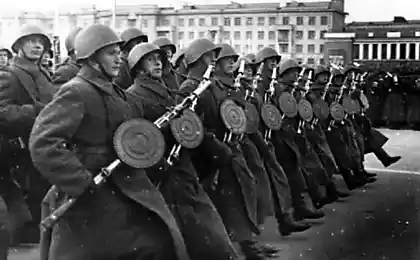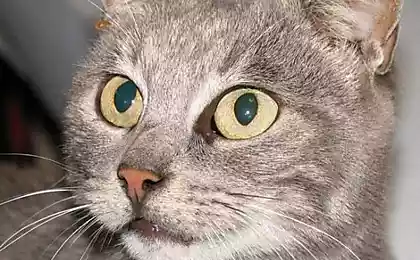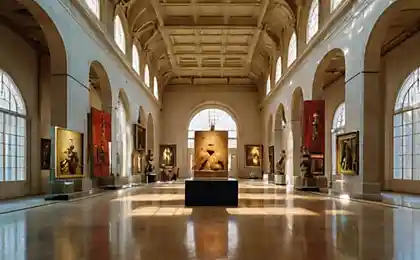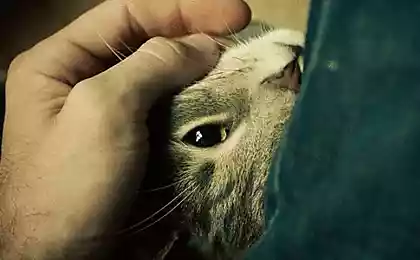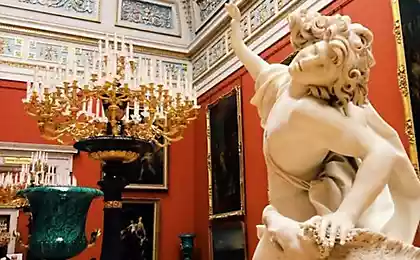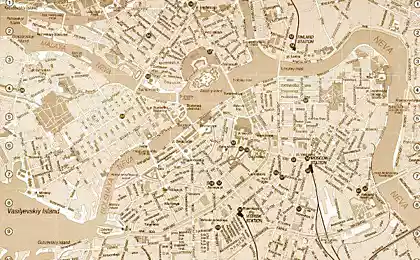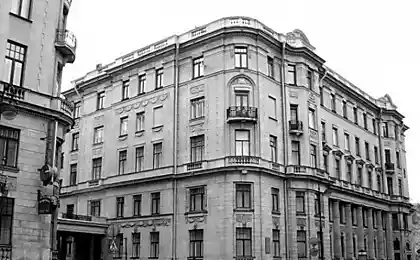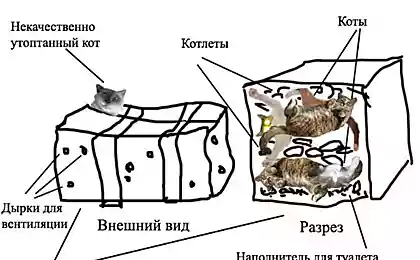1804
Army Hermitage cats
A whole army of cats since the founding of the museum properly they serve and protect the cultural heritage of Russia from rodents.
Today the Hermitage are dozens of cats. Each of them has a passport photo and is considered a highly qualified specialist.
3.jpg
A bit of history:
According to one legend himself Peter I brought a huge cat from Holland and put him in the old Winter Palace. Empress Elizabeth, who suffers from the hordes of rats and mice, issued a "decree of expulsion to the court of cats", according to which, to the court was ordered to deliver the biggest and most nimble cats, animals to carry the service to protect the palace from rodents. There was a detachment, consisting of a dozen selected rat-catchers sent to the court of Kazan as a gift from the Kazan Khan.
Cats survived, and Catherine the Great, who founded the Hermitage, have mastered the territory of the new palace. When her cats were divided into outbuildings and house, and among the latter dominated Russian Blue.
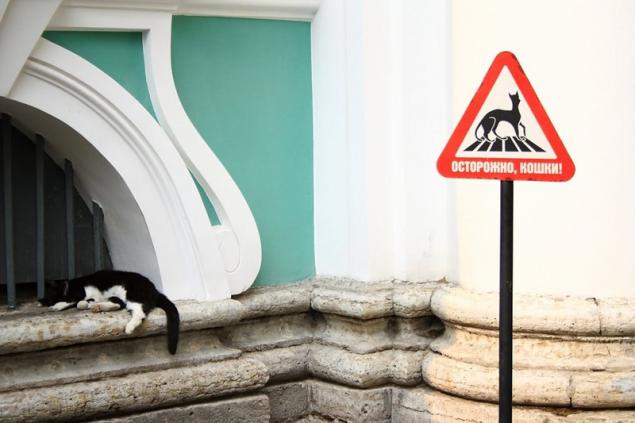
In XX century, cats continue to serve the palace, by now a museum, but hardly any of them survived during the siege ... In time of war in the city, literally infected rodents, Kitten on the black market worth insanely expensive - half a loaf of bread . To cope with the rats without Murok and Vasek was impossible, so after the war came to Leningrad two cars with cats.
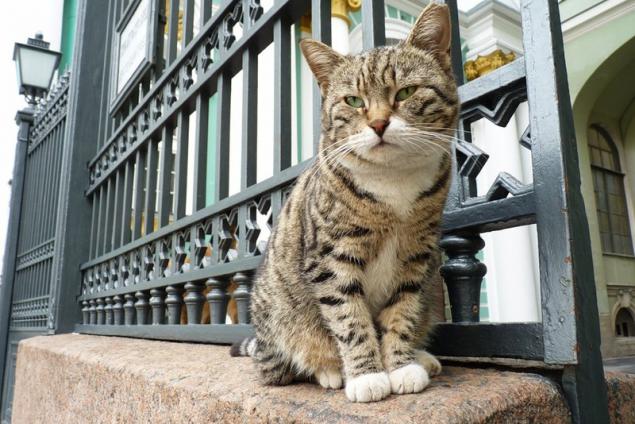
In 1960 came the other extreme - too many cats. People who are not willing or able to keep them at home, threw the former pets to the museum.
In conventional cities, unnecessary zverushku thrown in the trash, but in the cultural capital - the museum.
And settled domestic cats are not in the cellars, and through the halls and corridors. "Ermiki" as they are called the museum staff have become so impudent that they had to drive even with the imperial throne.
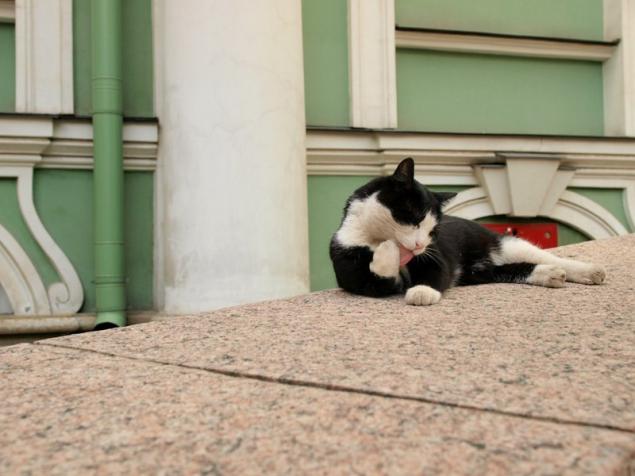
Vaska Lawyer.
The second half of the nickname he received for that one time loved to drop in to the office of legal counsel. But it was in the days when the catch this cat in the basement of the Hermitage was nothing, and lawyers began to torment creative crisis. He could not find a use and finally found him.
- The place of his service Vaska chose the main entrance - says Maria Haltunen. - It has become a real cat-porter. Every morning, twenty minutes before the opening, our lawyer had to "work" and loudly indignant that the door is still locked. When people began to start, he went up the steps and required visitors attention. Each found a common language. Particularly fond of children, foreigners and cleaners. Played with the mop to a ripe old age.
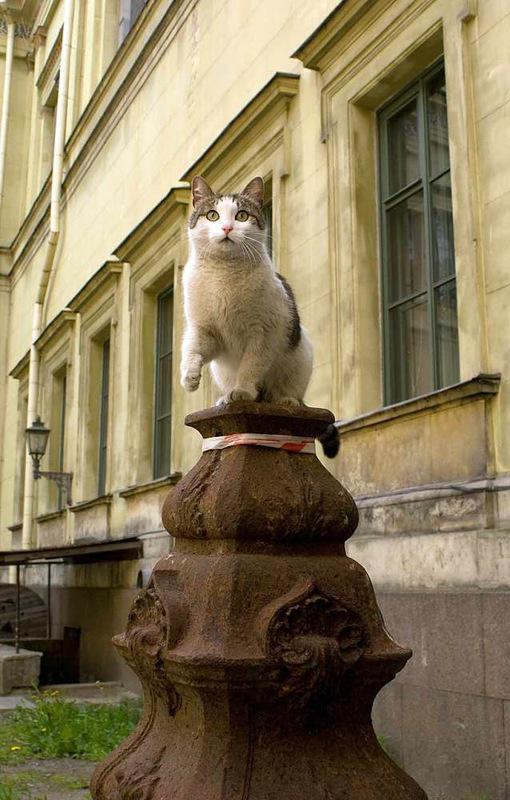
The current generation of active feline krysolovley not necessarily engage. Simply save the effect of presence: eat, sleep, smell, meow. Cats once and told St. Petersburg rats in the basement of the Hermitage who host.
Since then, about cats and cats cared Hermitage. Cats fed, treated, but the main thing - respect for hard work and assistance. A few years ago, the museum was even a special fund Friends of the Hermitage cats. This fund collects funds for different cat needs, organizing all sorts of promotions and exhibitions.
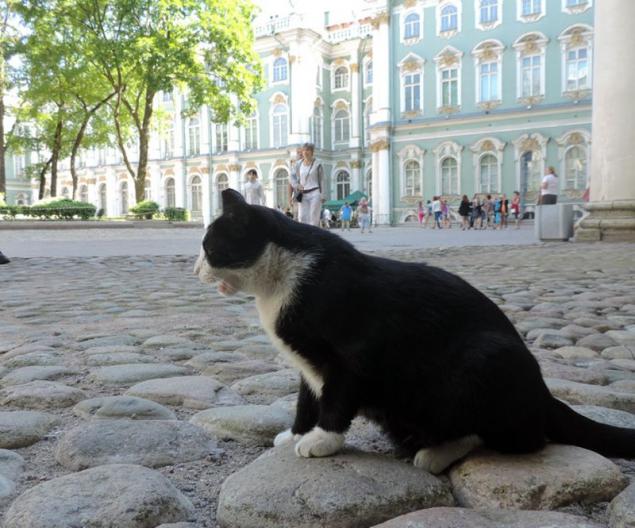
Most cats living in the Big Cat's basement, where every day come 3 employee of the museum, museum caring for cats. Here dry, warm and light. All doors are equipped with special doors at the bottom - that cats could go home any time of the day.
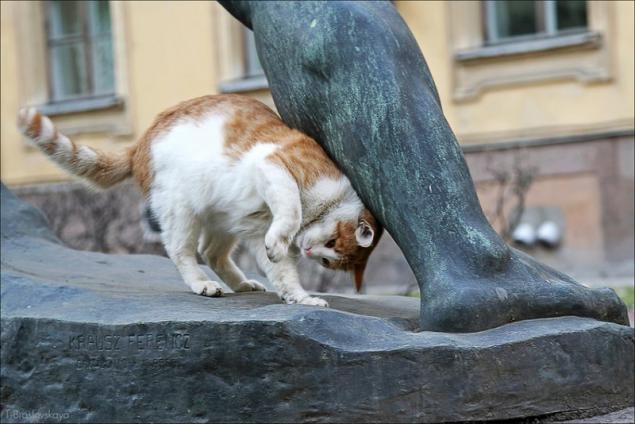
Cats can move freely within the territory of the Hermitage, but the entrance to the museum halls vospreschёn them. All pipes leading to the basement, closed bars to prevent there to get the cats, because it is not known how to construct the ventilation system of the Hermitage, because the drawings were Uther few centuries ago.
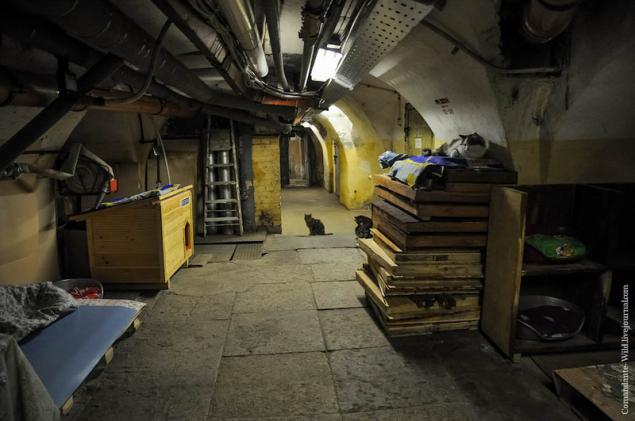
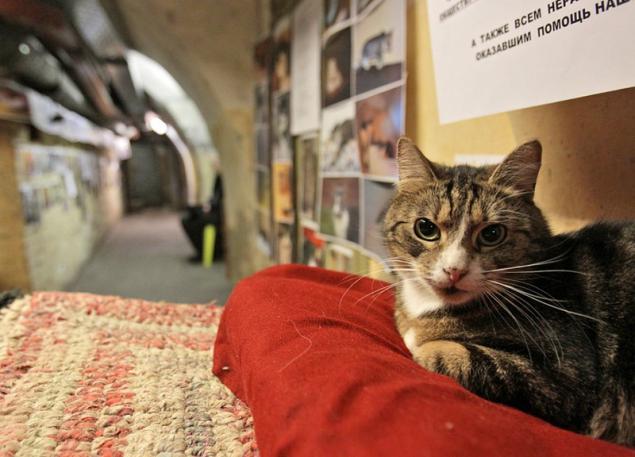
Here spend honey. inspection shaggy. To feed this horde, workers Hermitage quite legally rent money, which bought dry food, porridge.
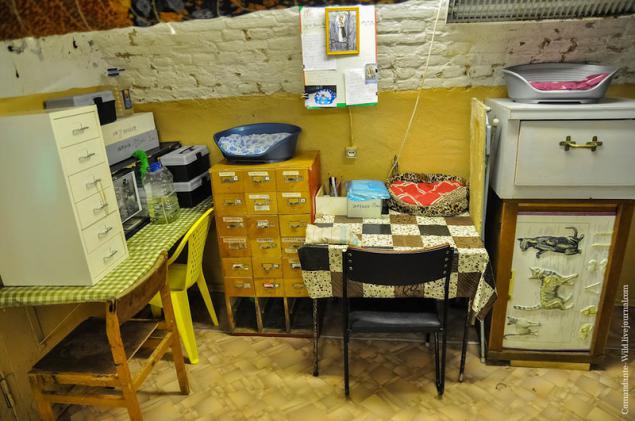
That's how they live in the basement brazen muzzle.
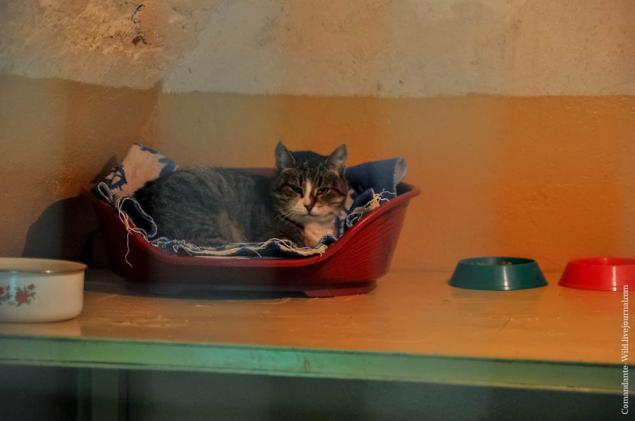
Cats have bowls, toilets and baskets where you can lie.
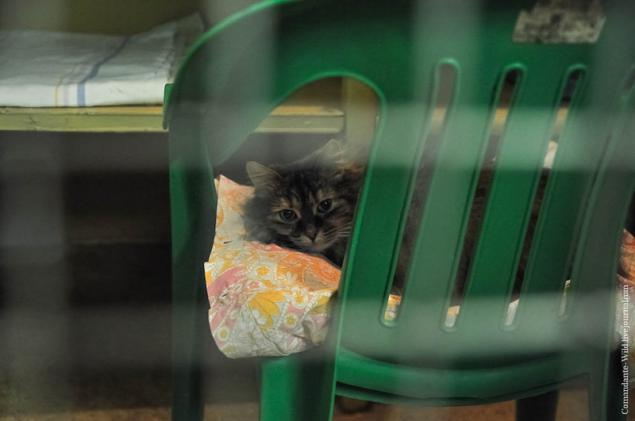
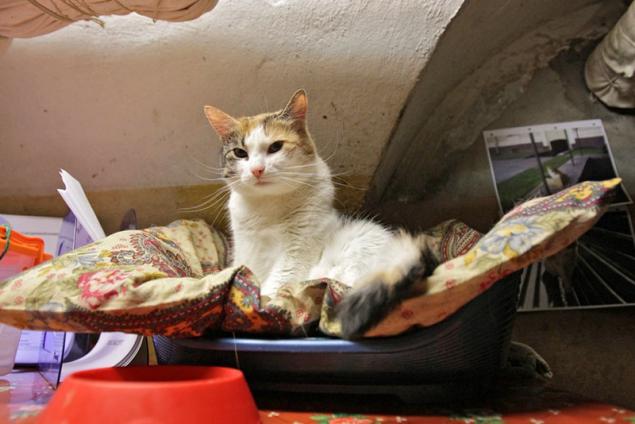
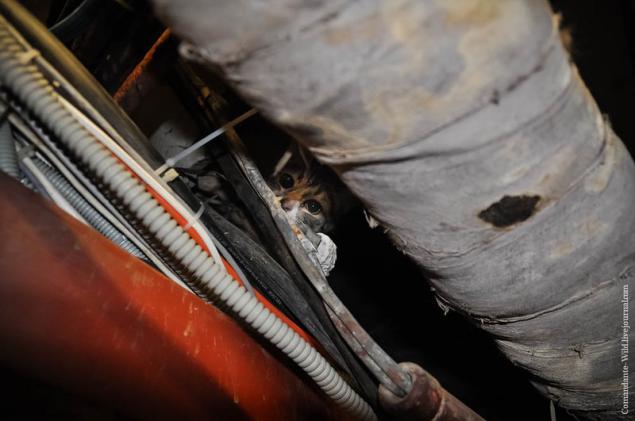
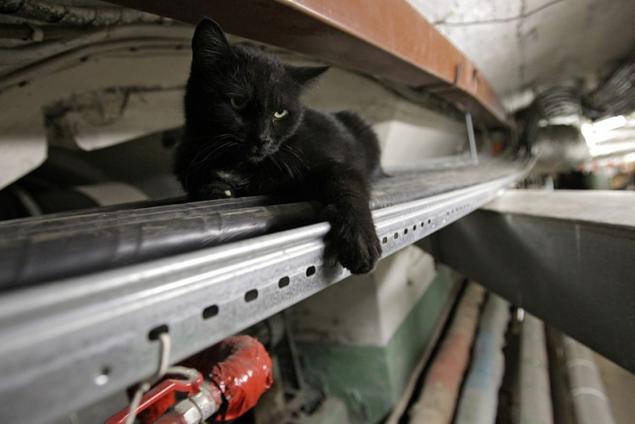
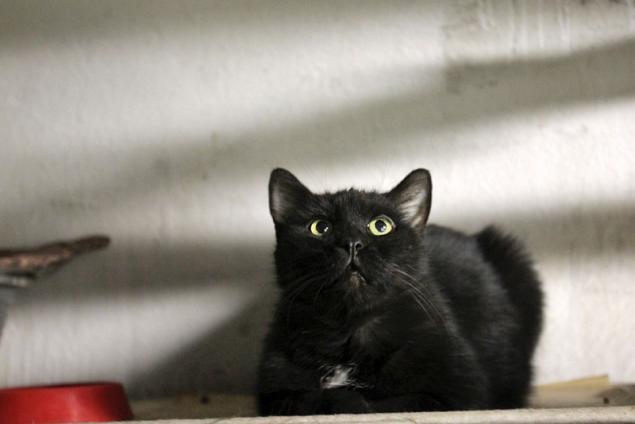
Someone more fortunate, and he got a whole kotobudka.
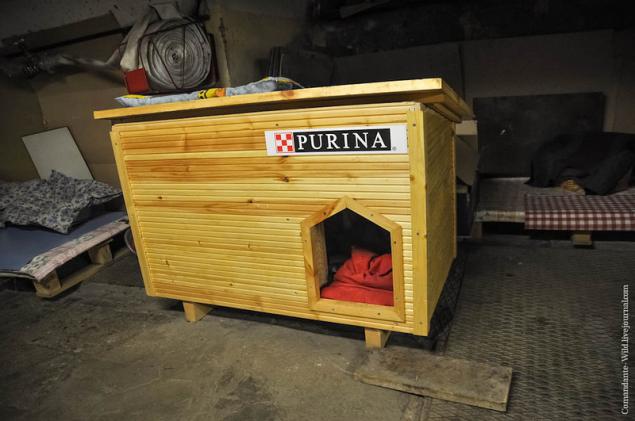
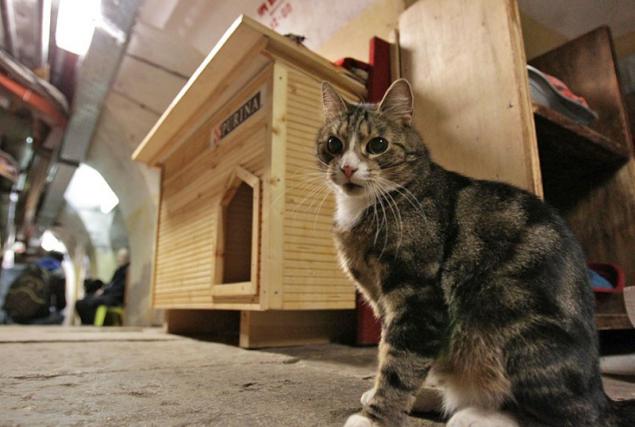
Very rarely, but it happens that the inhabitants of the museum basement becomes greater than that required for the protection of national wealth. Check Digit - 60. And then the Hermitage staff conducted a special campaign - St Petersburg distribute some of their legendary cats. However, to become the owner of the Hermitage cat is not easy - the museum staff are exploring potential hosts candidacy and give animals only in good hands.
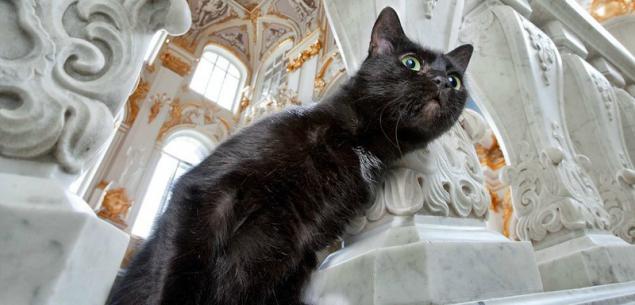
Day of the Hermitage cat runs April 21.
Visitors allowed into the premises of the Hermitage: the attic and the basement. On this day, all the cats released to the public, so that visitors can look at the pets. In this day there are different games and activities for adults and students associated with cats, such as lions or Hunting Trip to Hermitage cat. Also presented paintings by famous artists depicting the Hermitage cats.
Festive events held since 1998.
Would you like a cat from the Hermitage?
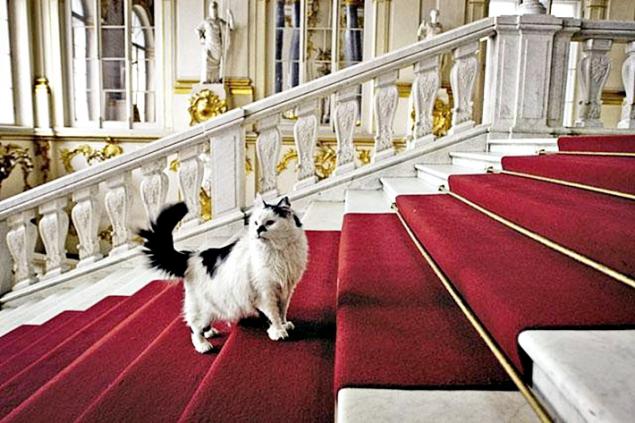
Today the Hermitage are dozens of cats. Each of them has a passport photo and is considered a highly qualified specialist.
3.jpg
A bit of history:
According to one legend himself Peter I brought a huge cat from Holland and put him in the old Winter Palace. Empress Elizabeth, who suffers from the hordes of rats and mice, issued a "decree of expulsion to the court of cats", according to which, to the court was ordered to deliver the biggest and most nimble cats, animals to carry the service to protect the palace from rodents. There was a detachment, consisting of a dozen selected rat-catchers sent to the court of Kazan as a gift from the Kazan Khan.
Cats survived, and Catherine the Great, who founded the Hermitage, have mastered the territory of the new palace. When her cats were divided into outbuildings and house, and among the latter dominated Russian Blue.

In XX century, cats continue to serve the palace, by now a museum, but hardly any of them survived during the siege ... In time of war in the city, literally infected rodents, Kitten on the black market worth insanely expensive - half a loaf of bread . To cope with the rats without Murok and Vasek was impossible, so after the war came to Leningrad two cars with cats.

In 1960 came the other extreme - too many cats. People who are not willing or able to keep them at home, threw the former pets to the museum.
In conventional cities, unnecessary zverushku thrown in the trash, but in the cultural capital - the museum.
And settled domestic cats are not in the cellars, and through the halls and corridors. "Ermiki" as they are called the museum staff have become so impudent that they had to drive even with the imperial throne.

Vaska Lawyer.
The second half of the nickname he received for that one time loved to drop in to the office of legal counsel. But it was in the days when the catch this cat in the basement of the Hermitage was nothing, and lawyers began to torment creative crisis. He could not find a use and finally found him.
- The place of his service Vaska chose the main entrance - says Maria Haltunen. - It has become a real cat-porter. Every morning, twenty minutes before the opening, our lawyer had to "work" and loudly indignant that the door is still locked. When people began to start, he went up the steps and required visitors attention. Each found a common language. Particularly fond of children, foreigners and cleaners. Played with the mop to a ripe old age.

The current generation of active feline krysolovley not necessarily engage. Simply save the effect of presence: eat, sleep, smell, meow. Cats once and told St. Petersburg rats in the basement of the Hermitage who host.
Since then, about cats and cats cared Hermitage. Cats fed, treated, but the main thing - respect for hard work and assistance. A few years ago, the museum was even a special fund Friends of the Hermitage cats. This fund collects funds for different cat needs, organizing all sorts of promotions and exhibitions.

Most cats living in the Big Cat's basement, where every day come 3 employee of the museum, museum caring for cats. Here dry, warm and light. All doors are equipped with special doors at the bottom - that cats could go home any time of the day.

Cats can move freely within the territory of the Hermitage, but the entrance to the museum halls vospreschёn them. All pipes leading to the basement, closed bars to prevent there to get the cats, because it is not known how to construct the ventilation system of the Hermitage, because the drawings were Uther few centuries ago.


Here spend honey. inspection shaggy. To feed this horde, workers Hermitage quite legally rent money, which bought dry food, porridge.

That's how they live in the basement brazen muzzle.

Cats have bowls, toilets and baskets where you can lie.





Someone more fortunate, and he got a whole kotobudka.


Very rarely, but it happens that the inhabitants of the museum basement becomes greater than that required for the protection of national wealth. Check Digit - 60. And then the Hermitage staff conducted a special campaign - St Petersburg distribute some of their legendary cats. However, to become the owner of the Hermitage cat is not easy - the museum staff are exploring potential hosts candidacy and give animals only in good hands.

Day of the Hermitage cat runs April 21.
Visitors allowed into the premises of the Hermitage: the attic and the basement. On this day, all the cats released to the public, so that visitors can look at the pets. In this day there are different games and activities for adults and students associated with cats, such as lions or Hunting Trip to Hermitage cat. Also presented paintings by famous artists depicting the Hermitage cats.
Festive events held since 1998.
Would you like a cat from the Hermitage?



